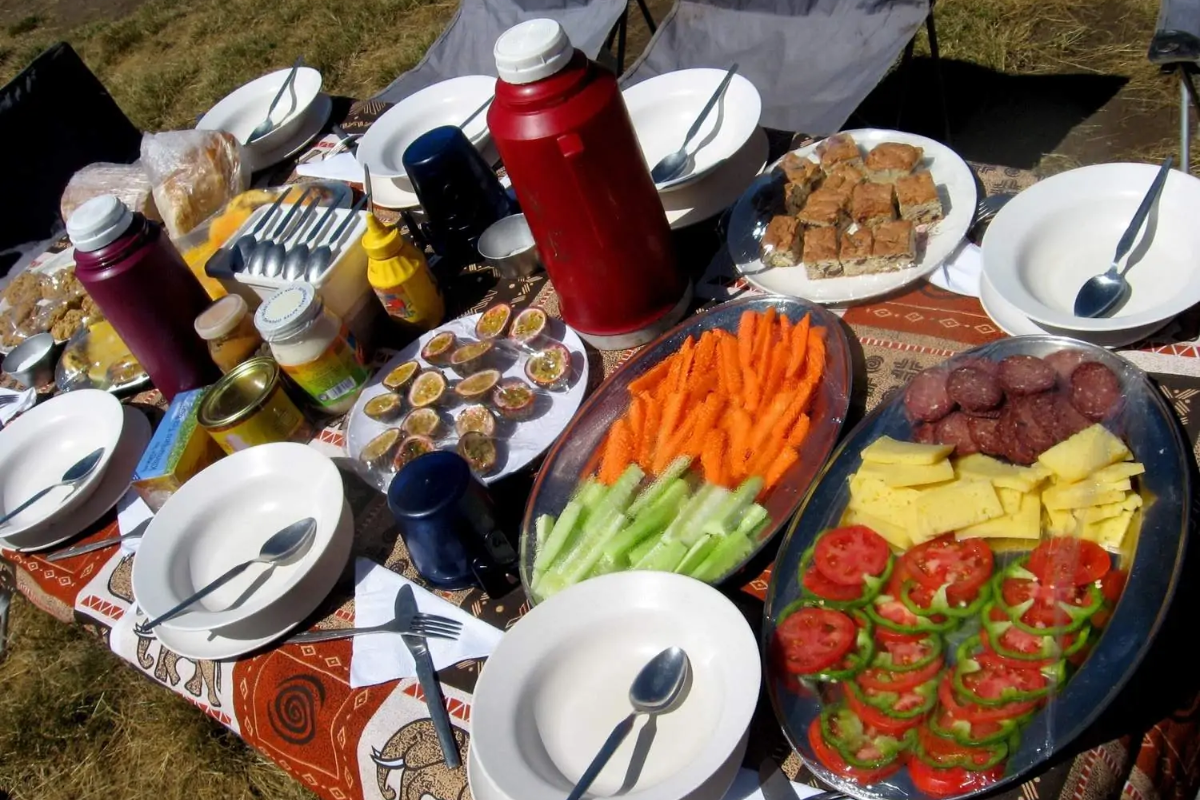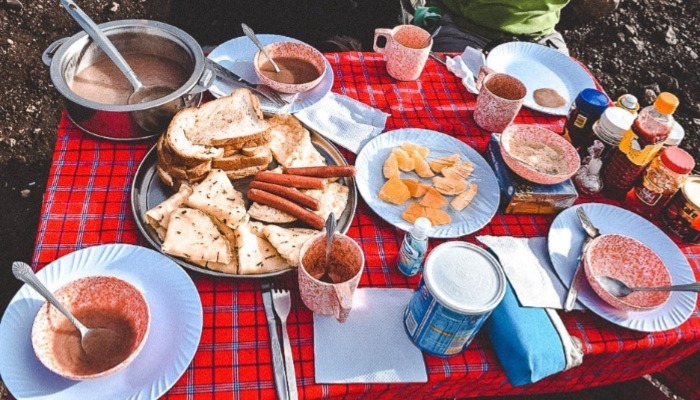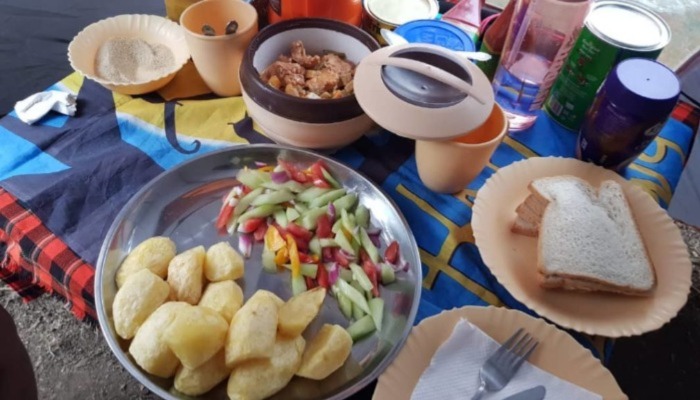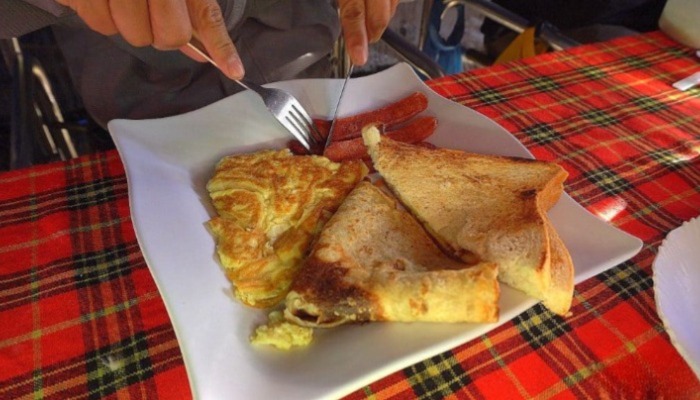

Written by

Picture this in your mind – the Kilimanjaro Foods options! Do unappetizing food packages, powdered mixes, and unhealthy carbs come to mind? Well, we are here to assure you that this couldn’t be farther from the truth. Up on the mountain, you eat real nutrient-rich food, and lots of it at that!
Supplying your body with sufficient calories is a vital aspect of successfully reaching the Kilimanjaro Summit. While an average individual burns 2,500 calories per day, a hiker on Kilimanjaro can burn up to 7,000 calories a day. To keep yourself fueled you need nutritious Kilimanjaro Foods. Therefore, this blog will offer a conclusive breakdown of every food aspect of Kilimanjaro.
While on your Kilimanjaro Trek expedition, you will be presented with breakfast, lunch, and dinner for each day that you spend on the mountain. The food is specially selected to help you with your climb and consists of high-energy carbohydrate-rich foods that are easily digestible.
The following is a sample Kilimanjaro Foods Menu that includes all three meals of the day – breakfast, lunch, and dinner, along with options that you’ll have for snacks in the afternoon or during the course of your climb.
| MEAL TIME | BREAKFAST | LUNCH | DINNER | SNACKS |
| DAY 1 | Oatmeal with Fruits | Sandwiches with Chicken and Vegetables | Spaghetti Bolognese with Garlic Bread | Energy Bars, Trail Mix, Fruits |
| DAY 2 | Pancakes with Maple Syrup | Wraps with Tuna and Avocado | Grilled Chicken with Roasted Vegetables | Protein Bars, Nuts, Dried Fruit |
| DAY 3 | Scrambled Eggs with Toast | Quinoa Salad with Grilled Shrimp | Beef Stew with Mashed Potatoes | Granola Bars, Jerky, Crackers |
| DAY 4 | Yoghurt with Granola | Vegetable Curry with Rice | Grilled Fish with Steamed Vegetables | Energy Gels, Chocolate |
| DAY 5 | Fresh Fruit and Yoghurt | Pasta Salad with Grilled Chicken | Lentil Soup with Bread | Trail Mix, Protein Bars |
| DAY 6 | Omelette with Vegetables | Chicken Caesar Salad | Grilled Steak with Roasted Potatoes | Dried Fruits |
| DAY 7 | Cereal with Milk | Falafel Wrap with Hummus and Veggies | Vegetable Stir-Fry with Tofu and Rice | Energy Bars, Jerky, Fruits |
Staying hydrated is of paramount importance while on a Mount Kilimanjaro Climbing expedition. At high altitudes, such as those experienced on Kilimanjaro, the body undergoes physiological changes that can lead to increased fluid loss and dehydration.
Further Insights – Staying hydrated plays a significant role in preventing altitude-related illnesses. Dehydration exacerbates the symptoms of altitude sickness, such as headaches, dizziness, nausea, and shortness of breath.

Snacks act as morale boosters during the challenging trek. As you face the physical and mental strain of the climb, the simple act of enjoying a snack can provide a much-needed respite and a sense of comfort. It offers a momentary break from the challenging journey, allowing you to rejuvenate, refuel, and gather the strength to continue your ascent.
However, it’s essential to choose snacks that are lightweight, non-perishable, and easily digestible. The climate and altitude of Kilimanjaro demand careful consideration of snack choices. When pondering about Good Snack Food for Kilimanjaro, opt for snacks that can withstand temperature fluctuations and remain intact throughout the climb.

When considering what the Best Food for Kilimanjaro is, make sure to give a special emphasis towards items that are rich in carbohydrates. The primary sources of carbohydrates for Kilimanjaro meals are rice, potatoes, and pasta. Fresh fruits and vegetables come with every meal.
Carbohydrates should make for the largest percentage of Food on Kilimanjaro at high altitudes. And, it is advised that more than 60% of your calorie intake should come from carbohydrates while trekking through the higher altitude region of Mt Kilimanjaro.

At higher altitudes, climbers tend to struggle with loss of appetite and nausea. Though, do try your best to keep eating regardless of this because you want to negate the possibility of a calorie deficit.
Below are some of our personalized best practices for eating at an altitude:
If you aim to succeed in the massive challenge of Mount Kilimanjaro Climbing, you need the proper amount of fuel. And no one in the world can make it to Uhuru with a bare-bones diet! This is the reason why Kilimanjaro Foods have a blend of deliciousness as well as nourishing richness.
Mar 29, 2024



Tanzania Tribe Safari is an exceptional organization focused on delivering a customized Tanzanian experience to its customers. I highly recommend them to anyone interested in traveling to Tanzania in search of a one-of-a-kind experience.
The trip of a lifetime! Tanzania Tribe Safari created a seamless experience for us from wonderful hotels and a tented camp to a safari experience that kept us in awe. Our safari guide Amini wore many hats during our trip and had eyes of an eagle!
Oh my gosh! Where do I start? My three sisters and I booked a trip to Tanzania and Zanzibar through Tanzania Tribe Safari. It can be marked as a trip of a lifetime! Our safari guide, Amini was very knowledgeable about the animals and terrain.